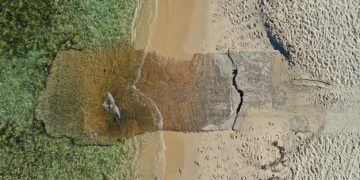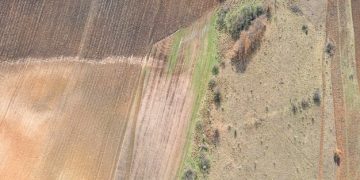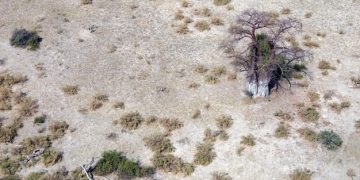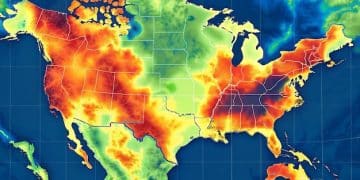Hail Events & Property: Protect Your Home Now
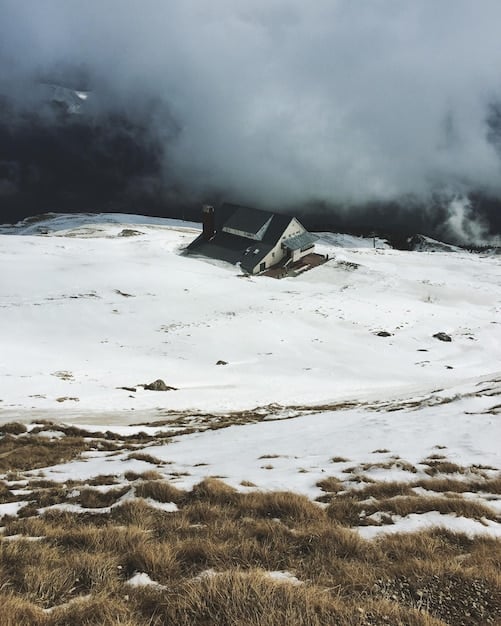
Property owners in the US face increasing risks from extreme hail events, necessitating a clear understanding of why these storms are more frequent and what comprehensive protective measures can be implemented to safeguard investments and ensure safety.
Understanding the Increased Frequency of Extreme Hail Events: Protective Measures for Your Property is becoming increasingly vital for homeowners and businesses alike, as climate patterns shift and bring forth more intense and frequent weather phenomena. The unsettling rise in large hail occurrences nationwide, particularly across the “Hail Alley” and other vulnerable regions, presents a tangible threat to personal safety and property integrity. This article delves into the science behind this escalation and offers practical, actionable strategies to mitigate damage and enhance resilience against these formidable natural forces.
The Escalating Threat: Why Hail Events Are More Frequent
The perception that hail storms are becoming more common and severe is not merely anecdotal; it’s increasingly supported by scientific observation and meteorological data. While hail has always been a component of severe thunderstorms, the uptick in extreme hail events, characterized by larger stone sizes and greater damaging potential, points to complex interactions within our changing climate system. Understanding the root causes of this increased frequency is the first step toward effective mitigation and adaptation.
One primary factor contributing to this trend is the warming of global temperatures. While seemingly counterintuitive for ice-based precipitation, warmer atmospheric conditions provide more energy for thunderstorms. Warm, moist air rising rapidly into the atmosphere fuels the updrafts necessary for hail formation. Stronger updrafts can suspend hailstones for longer periods, allowing them to accumulate more layers of ice and grow to larger, more destructive sizes. This enhanced convective energy creates a more potent environment for severe weather, including tornadic activity and large hail production.
Deepening Instability and Atmospheric Dynamics
The atmosphere’s instability is a critical ingredient for severe thunderstorms. As the lower atmosphere warms, the temperature difference between the surface and higher altitudes can increase significantly, leading to greater atmospheric instability. This enhanced instability means that once air begins to rise, it continues to accelerate upward, strengthening the updrafts even further. Coupled with ample moisture, these supercell thunderstorms become highly efficient hail producers.
- Increased Atmospheric Moisture: Warmer air holds more moisture, providing a larger reservoir of water vapor to condense and fuel thunderstorm development.
- Stronger Wind Shear: Changes in wind speed and direction with height (wind shear) are crucial for organizing severe thunderstorms into supercells, which are prolific hail producers. Climate change might influence these shear patterns.
- Elevated Convective Available Potential Energy (CAPE): CAPE is a measure of atmospheric instability. Higher CAPE values indicate a greater potential for explosive thunderstorm development and stronger updrafts.
Moreover, shifts in large-scale weather patterns, potentially influenced by climate change, may be altering the geographical distribution and frequency of severe weather. Regions previously less prone to significant hail might experience an increase, while traditional “Hail Alley” areas in states like Texas, Oklahoma, and Kansas could see even greater intensity. These atmospheric dynamics, while complex, paint a clear picture of an environment increasingly conducive to large and damaging hail.
The convergence of warmer temperatures, increased atmospheric moisture, and shifting wind patterns creates a more energetic and favorable backdrop for extreme hail formation. This scientific understanding underscores the importance of proactive measures for property protection, as these events are likely to persist and intensify.
Assessing Your Risk: Identifying Vulnerable Properties and Regions
Before implementing protective measures, it’s crucial to assess your specific risk. Not all properties or regions are equally vulnerable to extreme hail events. Geographic location plays a significant role, as certain areas are historically more prone to severe thunderstorms due to prevailing atmospheric conditions and storm tracks. The famous “Hail Alley” in the central United States is a prime example, but damaging hail events can occur far outside this traditional zone.
Understanding your local climate patterns and historical weather data is a vital first step. Many homeowners associations or local government websites provide information on past severe weather events. Additionally, consulting with local meteorological services or insurance providers can offer insights into the specific hail risks in your neighborhood. Property characteristics also contribute significantly to vulnerability.
Older homes with original roofing materials, such as asphalt shingles that may have deteriorated over time, are often more susceptible to hail damage. Windows made of single panes or less impact-resistant glass can also be a weak point. Landscaping, including mature trees near the house, can pose an additional risk if branches are downed during a storm. Assessing these elements helps paint a comprehensive picture of your property’s exposure.
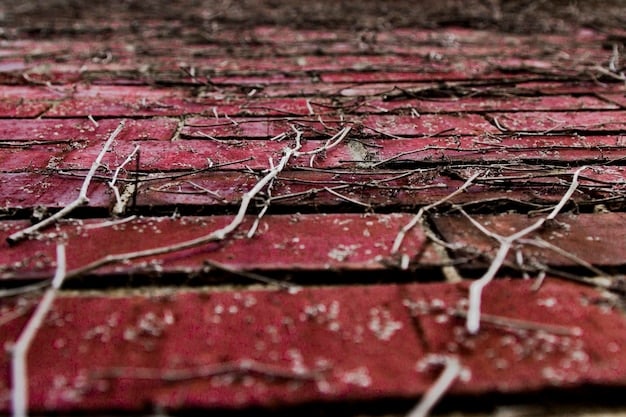
Property Features and Material Vulnerability
The materials used in your home’s construction directly impact its resilience to hail. While roofs are often the most visible victims of hail, other components are also at risk. These include siding, windows, outdoor fixtures, and even vehicles parked outside. Knowing the specific vulnerabilities of these elements allows for targeted upgrades and protective strategies.
- Roofing Materials: Standard asphalt shingles have varying levels of impact resistance. Higher-rated materials, such as Class 4 impact-resistant shingles, provide superior protection.
- Siding: Vinyl siding can crack or shatter upon hail impact, while aluminum siding can dent. Fiber cement or brick are generally more resilient.
- Windows: Single-pane glass is highly susceptible to shattering. Double-pane or laminated glass offers better protection.
- External Fixtures: Air conditioning units, skylights, satellite dishes, and solar panels are often exposed and can suffer significant damage.
Beyond material composition, the age and maintenance of these components also matter. A roof nearing the end of its lifespan is inherently more vulnerable than a newer installation. Regular inspections and timely repairs can significantly reduce the risk of extensive damage. By meticulously assessing both your geographic location and the specific features of your property, you can develop a more effective and tailored protection plan against the increasing threat of extreme hail.
This comprehensive risk assessment provides the foundation for informed decision-making regarding protective measures, ensuring that resources are allocated to the areas of greatest need and vulnerability.
Proactive Property Protections: Fortifying Your Home
Protecting your property from hail is not just about reacting after a storm; it’s about proactive fortification. Investing in enhanced roofing, window, and siding materials can significantly reduce the risk of damage. These measures often pay dividends over time, not only in reduced repair costs but also potentially lower insurance premiums and improved peace of mind. The goal is to make your home as resilient as possible against the physical impacts of large hailstones.
For roofs, which bear the brunt of most hail storms, upgrading to impact-resistant materials is paramount. Class 4 impact-resistant shingles, for example, are designed to withstand significant blunt force. These materials undergo rigorous testing to achieve their rating, offering superior protection compared to standard shingles. While the initial investment might be higher, the long-term benefits in terms of durability and avoided repairs are substantial. Beyond shingles, consider reinforced underlayment and vigilant maintenance to keep your roof in optimal condition.
Smart Material Choices for Enhanced Resilience
Selecting the right materials for all exterior surfaces can make a considerable difference in mitigating hail damage. This extends beyond the roof to include windows, siding, and other vulnerable components. Each material has different properties and levels of resistance, making informed choices critical for comprehensive protection.
- Impact-Resistant Roofing: Look for materials rated Class 3 or, ideally, Class 4. Options include certain asphalt shingles, modified asphalt, metal roofing, synthetic slate, and reinforced composite tiles.
- Siding Upgrades: Fiber cement siding offers superior impact resistance compared to vinyl or aluminum. Brick or stone facades are also highly durable against hail.
- Reinforced Windows and Skylights: Consider laminated or tempered glass for windows, which are more resistant to shattering. Polycarbonate skylights are also a highly durable option compared to standard glass.
Furthermore, securing outdoor items and considering protective coverings for stationary equipment can prevent incidental damage. This includes patio furniture, grills, and air conditioning units. Simple measures like bringing in smaller items or covering larger ones can save on costly repairs. Proactive fortification, through material upgrades and diligent preparation, forms the cornerstone of effective hail damage prevention for your home.
By focusing on these preventative strategies, homeowners can significantly enhance their property’s resilience, transforming it into a more robust shield against the increasing frequency and intensity of extreme hail events.
Immediate Post-Storm Actions: What to Do After Hail Strikes
Even with the best preventative measures, extreme hail can still cause damage. Knowing what to do immediately after a storm strikes is crucial for minimizing further loss and facilitating the insurance claims process. The moments following a severe hail event are critical for assessing damage, ensuring safety, and documenting the situation thoroughly. Do not rush to make immediate repairs without proper assessment, as this can sometimes complicate insurance claims.
First and foremost, ensure the safety of yourself and your family. Check for any downed power lines or structural damage that could pose an immediate threat. Once it’s safe to venture outside, conduct a preliminary visual inspection of your property. Look for obvious signs of damage on the roof, siding, windows, and any outdoor structures or vehicles. Take photographs and videos from various angles, focusing on both the overall condition and specific areas of concern. This documentation will be invaluable.
Navigating the Claims Process and Professional Repairs
Contacting your insurance provider should be a priority once you’ve confirmed damage. Report the incident promptly and inquire about their specific claims process. Be prepared to provide details of the storm, the observed damage, and any photographic evidence you’ve collected. Many insurance companies have specific protocols for hail damage claims, including preferred contractors or assessment procedures.
- Document Everything: Take clear, dated photos and videos of all visible damage. Don’t forget vehicles, fences, and outdoor equipment.
- Temporary Repairs: If there’s an immediate risk of further damage (e.g., a broken window or a hole in the roof), make temporary repairs to prevent water intrusion. Keep receipts for all materials used.
- Avoid Unsolicited Contractors: Be wary of “storm chasers” or contractors who appear uninvited after a storm. Always verify credentials and gather multiple bids from reputable local professionals.
When selecting contractors for repairs, prioritize licensed and insured professionals with experience in hail damage restoration. Obtain detailed estimates and ensure they clearly outline the scope of work, materials to be used, and payment schedules. A reputable contractor will also assist in working with your insurance company, providing necessary documentation and assessments. By following these steps, you can streamline the recovery process, minimize stress, and ensure your property is restored effectively and safely after a hail event.
Acting strategically and methodically in the aftermath of a hail storm enables a smoother recovery, safeguarding both your property and financial interests.
The Latest Innovations in Hail-Resistant Materials and Technology
As the frequency and intensity of extreme hail events continue to rise, so does the demand for more resilient building materials and innovative protective technologies. Manufacturers and researchers are actively developing solutions designed to withstand the increasingly formidable forces of nature. These advancements offer homeowners more robust options than ever before, moving beyond traditional materials to incorporate cutting-edge engineering and composition.
In roofing, the focus has shifted towards highly durable composites, reinforced polymers, and advanced metal alloys that can absorb impacts without fracturing or denting. Some new asphalt shingles now feature enhanced impact modifiers, allowing them to qualify for the highest impact resistance ratings. Beyond materials, smart home technologies are also playing a role, offering predictive capabilities and automated protective measures that can engage even when owners are away.
Emerging Solutions for Comprehensive Protection
The innovation isn’t limited to visible exterior surfaces. Beneath the surface, advancements in underlayment and structural reinforcement are also contributing to overall property resilience. These behind-the-scenes protections can significantly enhance a home’s ability to withstand extreme conditions.
- Advanced Roofing Systems: Beyond Class 4 shingles, new materials like advanced synthetic roofing offer extreme impact resistance, mimicking traditional appearances without the fragility.
- Automated Exterior Shutters: For windows and glass doors, automated hurricane or hail shutters can deploy rapidly, offering a robust barrier against incoming hailstones.
- Smart Weather Monitoring & Alerts: Integrated home systems can receive real-time storm alerts and even automatically close smart shutters or garage doors in anticipation of severe weather.
- Solar Panel Protectors: Transparent, impact-resistant covers are being developed for solar arrays, safeguarding these valuable and exposed installations.
These technological leaps offer a promising future for property protection, allowing homeowners to integrate superior resilience into their building envelopes. From new materials that defy impact to intelligent systems that provide early warning and automated defense, the industry is responding to the escalating threat of extreme hail. Investing in these innovative solutions not only provides peace of mind but also positions properties to better withstand the challenges of an evolving climate.
Embracing these innovations can significantly elevate a property’s defense, ensuring it remains safeguarded against even the most extreme hail events.
Insurance Considerations: Policies, Premiums, and Claims
Navigating the complexities of home insurance policies is a critical aspect of preparing for and recovering from extreme hail events. Your homeowner’s insurance policy is designed to cover damage from natural disasters, including hail, but the specifics of coverage can vary widely. Understanding your policy’s terms, deductibles, and limitations before a storm hits is essential to avoid surprises and ensure a smooth claims process.
A standard homeowner’s policy typically includes coverage for hail damage to the dwelling and other structures, as well as personal property. However, it’s crucial to distinguish between “actual cash value” and “replacement cost” coverage. Actual cash value policies pay the depreciated value of damaged items, while replacement cost policies cover the cost to repair or replace without deduction for depreciation, offering more comprehensive protection. Many policies also have specific deductibles for wind and hail damage, which can be a percentage of your dwelling coverage rather than a fixed dollar amount.
Optimizing Your Coverage for Hail Risk
Premiums can be influenced by several factors, including your location, the age and construction of your home, and your claims history. Some insurance providers offer discounts for homes with impact-resistant roofing or other preventative measures. It’s always advisable to review your policy annually and discuss your specific hail risk with your agent to ensure adequate coverage.
- Review Declarations Page: Understand your coverage limits, deductibles (especially for hail/wind), and whether your policy is RCV (Replacement Cost Value) or ACV (Actual Cash Value).
- Consider Endorsements: For homes in high-risk areas, consider additional endorsements for specific assets like solar panels or unique structures not fully covered by standard policies.
- Document Valuables: Maintain an updated inventory of your personal property, ideally with photos or videos, to expedite personal property claims.
When making a claim, detailed documentation, precise communication, and patience are key. Provide your insurance company with all requested information, including repair estimates from reputable contractors. If there are disputes, understand your rights as a policyholder and consider seeking professional advice from a public adjuster or legal counsel if necessary. By actively managing your insurance policy and understanding its nuances, you can transform it from a mere document into a vital safety net against the financial impact of hail damage.
Proactive engagement with your insurance provider ensures that your policy effectively serves its purpose, providing robust financial protection when hail strikes.
Community Resilience and Future Preparedness
While individual property protection is vital, fostering community-wide resilience against extreme hail events amplifies overall safety and recovery efforts. Governments, local organizations, and neighbors can work together to implement large-scale mitigation strategies and preparedness programs. A united approach can create a more robust defense against increasing weather challenges, benefiting everyone within the community.
Local authorities can play a crucial role in updating building codes to mandate using more hail-resistant materials in new constructions and significant renovations. Implementing zoning regulations that encourage smart urban planning, such as maintaining green spaces that can absorb runoff and reduce localized flooding often associated with intense thunderstorms, also contributes to broader resilience. Public awareness campaigns are equally important, educating residents about hail risks and personal preparedness strategies.
Collective Actions for a Stronger Future
Community preparedness initiatives can include establishing early warning systems, creating accessible shelters, and developing organized recovery plans. These collective efforts create a stronger fabric of defense, ensuring that when severe weather hits, the community can respond efficiently and effectively.
- Community Education Programs: Workshops and public campaigns to educate residents on hail safety, property reinforcement, and emergency protocols.
- Local Building Code Updates: Advocating for and implementing stricter building codes that require impact-resistant materials for new constructions and major renovations.
- Emergency Preparedness Drills: Regular drills and simulations to practice community response to severe weather events, including evacuation routes and shelter access.
- Shared Resource Networks: Establishing networks for sharing resources, equipment, and volunteers during post-storm recovery efforts.
Investing in resilient infrastructure, promoting sustainable land use practices, and supporting scientific research into climate patterns further strengthen a community’s ability to adapt. Collaborations between meteorologists, urban planners, emergency responders, and residents create a comprehensive ecosystem of preparedness. By embracing these collective actions, communities can move beyond individual protection to build a future where they are not just surviving, but thriving in the face of increasingly frequent extreme hail events.
This holistic approach ensures that preparedness extends beyond individual homes, creating a resilient community capable of confronting future weather challenges effectively.
| Key Aspect | Brief Description |
|---|---|
| 🌬️ Increased Frequency | Warmer temperatures fuel stronger thunderstorms, leading to more frequent and larger hail. |
| 🛡️ Property Fortification | Upgrade to impact-resistant roofing (Class 4), reinforced windows, and durable siding materials. |
| 📸 Post-Storm Actions | Document damage immediately with photos/videos, secure temporary repairs, and contact insurance promptly. |
| 📊 Insurance Smarts | Review your policy, understand deductibles and coverage types (RCV vs. ACV), and explore discounts for protective upgrades. |
Frequently Asked Questions About Hail Damage
▼
Modern hail storms are gaining intensity primarily due to increased atmospheric energy and moisture, both linked to a warming climate. Warmer air fuels stronger updrafts within thunderstorms, allowing hailstones to remain suspended longer and grow to larger, more damaging sizes before falling. This heightened energy creates ideal conditions for severe weather events.
▼
Class 4 impact-resistant roofing is the highest rating for impact resistance under UL 2218 testing standards. It signifies that the material can withstand being hit by a 2-inch steel ball dropped from 20 feet twice in the same spot, without cracking or fracturing. This superior durability significantly reduces the risk of hail damage to your roof.
▼
Yes, you absolutely should make temporary repairs if there’s a risk of further damage, such as water leaking through a damaged roof or window. Use tarps, plywood, or plastic sheeting to prevent additional loss. Be sure to document these temporary fixes with photos and keep all receipts for materials, as these costs are often reimbursable by insurance.
▼
Hiring a public adjuster is typically considered when there’s a dispute over the insurance company’s assessment or if the claim is complex. A public adjuster represents your interests, not the insurer’s, and can help negotiate a fair settlement. For straightforward claims, working directly with your insurance company’s adjuster is usually sufficient.
▼
Community action fosters resilience through collective efforts like updated building codes, public education campaigns, and shared emergency plans. When a whole community adopts hail-resistant practices and prepares together, the overall impact of severe storms is significantly reduced. This collaborative approach creates a stronger, safer environment for all residents.
Conclusion
The increasing frequency and intensity of extreme hail events present a clear and evolving challenge for property owners across the United States. While the science points to climate-driven atmospheric changes as key contributors, the good news is that homeowners and communities are not powerless. By systematically assessing individual risks, proactively fortifying properties with advanced materials, understanding immediate post-storm actions, and optimizing insurance coverage, significant protection can be achieved. Moreover, fostering community-wide resilience through updated building codes and collaborative preparedness programs amplifies these efforts. Embracing these comprehensive strategies is essential for safeguarding investments and ensuring the enduring safety of both properties and people in the face of nature’s formidable forces.


